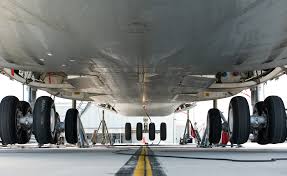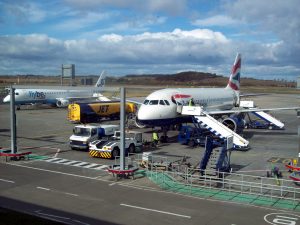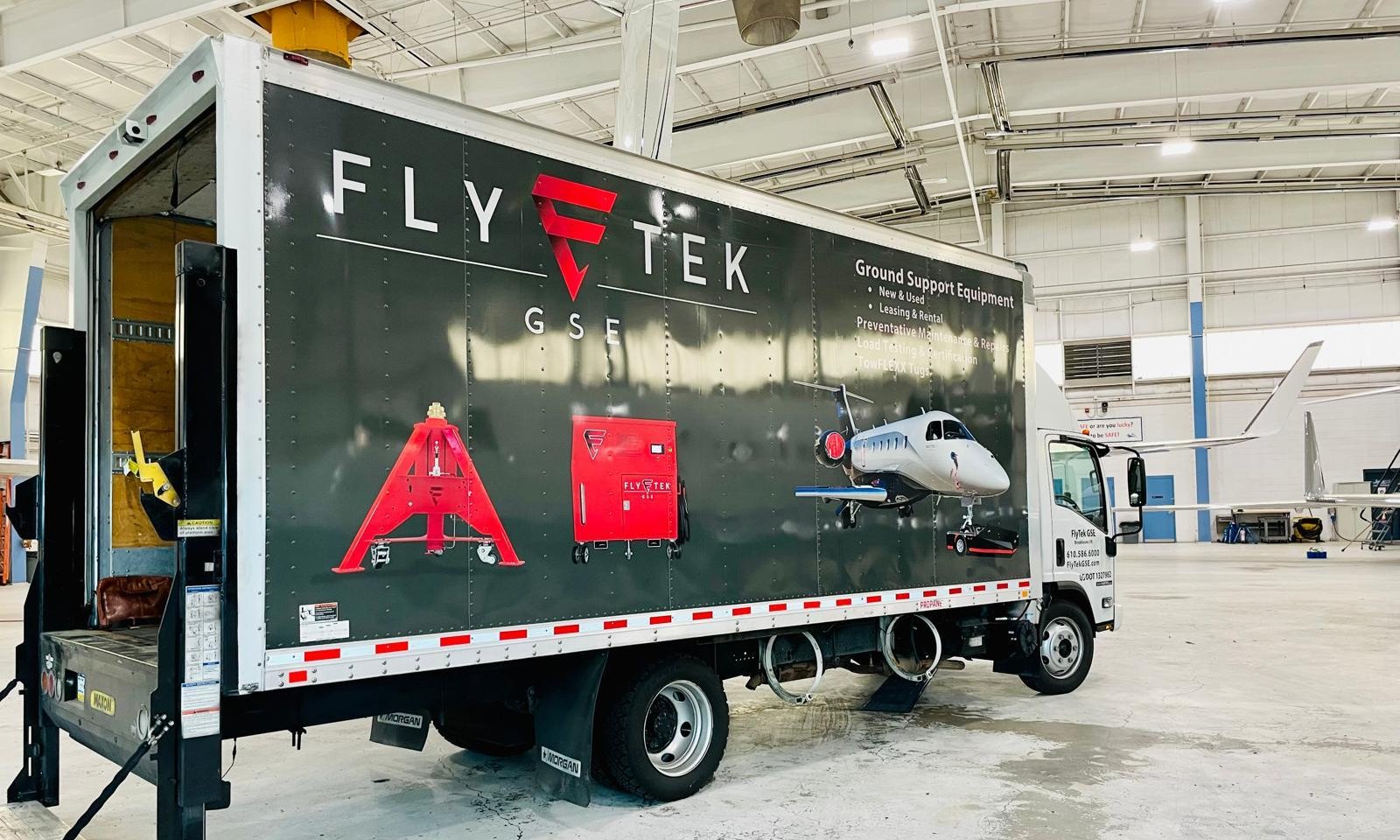Ground support equipment (GSE) is vital to both safety and productivity in the aviation industry. It is extremely important that ground support equipment inspections are performed routinely and by trained professionals. Failure to properly inspect and maintain equipment can not only lead to very expensive damage, but can put the life and well-being of personnel at risk.
Following the tips provided below for inspections of jacks, tail stands, towbars, work stands and engine slings will help prevent equipment failure, unnecessary downtime, and keep employees safe. A good GSE maintenance provider will handle all of this and more.
Jack GSE Inspections

Jacks may require different inspection protocol depending on the type of jack, but there are some key considerations that are the same for all jacks.
During GSE maintenance, a proof load test should be performed on jacks to make sure they can support the weight that they are rated for. If a jack cannot support the weight of an aircraft, technicians are in danger of an accident occurring. The pumps used in the jacks should be inspected to verify that they are functioning correctly, as a failing pump could result in serious damage to the aircraft involved.
Ground support equipment inspections for jacks should also include checking for evidence of fluid leaks, and if a leak is found, removing the jack from service until the source of the leak is repaired. Special attention should also be paid to fittings and hoses. The frame of the jack should be evaluated for signs of damage and must be repaired before use if evidence of damage is found.
Tail Stand GSE Inspections
The tail stands, also known as jack stabilizing stands, are another type of GSE that should be routinely inspected. The neck of the tail stand should slide up and down smoothly. If the tail stand encounters friction when set up, it should be replaced.
Another key aspect of a tail stand inspection is verification that the alarm is functional. Remember that the alarm lets the aircraft personnel know if the stand is being overloaded, which is vital for safety. The stabilizing pin is also very important. When routine GSE maintenance is performed, the stabilizing pin should be checked for signs of abnormal wear, bending, or rust. If any of these are present, the pin should be replaced.
Towbar GSE Inspections

Ground support equipment inspections for towbars are very important. A good technician will always check the bolts when performing maintenance on a towbar. Loose bolts should be tightened, and missing bolts should be replaced. The same goes for pins – a towbar should not be used if any of the pins are missing. Replace missing pins before putting the towbar back in operation.
The shear pin is another key area to check; broken shear pins and cracked shear pin bushings must be replaced before a towbar is returned to service. The towbar should be evaluated to make sure it can attach a head securely, and the towbar should be straight without any bends. All axles and bearings should be greased during maintenance. Finally, the tires should be checked for proper inflation and signs of excessive or abnormal wear.
Work Stand GSE Inspections

Like towbars, work stands are another key part of ground support equipment. Work stands must be safe and functioning properly for technicians who will be using it to reach the aircraft.
Hydraulics are very important to the safe performance of work stands. Work stands should be carefully checked for hydraulic leaks and any leaks must be addressed before the work stand can be used again. Hydraulic fluid levels should be checked and hoses should be inspected as part of hydraulic maintenance. The following components must be checked as well:
- All lock pins, safety chains, handles, casters, and handrails should be present, and any missing components must be replaced.
- Casters and hinges should be lubricated.
- Safety stops must be inspected, and if they are not working, they must be repaired before the work stand is returned to service.
- Weight loads should be tested to make sure the work stand can still safely handle necessary loads.
- The frame of the work stand must also be inspected for evidence of damage. This includes the welds, support tubes, and base supports.
- Finally, aircraft bumpers should be in place with no visible signs of damage.
Engine Sling GSE Inspections
Ground support equipment inspections must be performed on engine slings, which are another vital piece of ground service equipment. Not only can a failed engine sling result in thousands of dollars of damage to an aircraft engine, but it can pose serious safety issues for the personnel using it.
During routine GSE maintenance, the straps should be checked for excessive wear and replaced if there is any question of their ability to perform. Pins, fasteners, and even labels must be replaced if they are missing. A good technician will carefully check the condition of the sling material, verifying that it is not showing any evidence of excessive wear or damage. A sling with a crumby appearance could be a sign that it can no longer support a load safely.
Bolts are another key point of inspection and should be tightened as needed. All shackles and ball-lok pins should be checked to verify that they are operational.
Your Best Bet for Ground Support Equipment Inspections

At FlyTek GSE, we specialize in ground support equipment inspections, as well as the maintenance, troubleshooting, and repair of GSE. We will work with you to create a specialized maintenance program that includes onsite inspections, testing, certifications, and repairs. We also offer services for HPU maintenance and repair along with oil sampling and testing, jack load testing and certification, and the sale of both new and used equipment. Contact FlyTek GSE today to learn what we can do keep your ground support equipment running smoothly.



